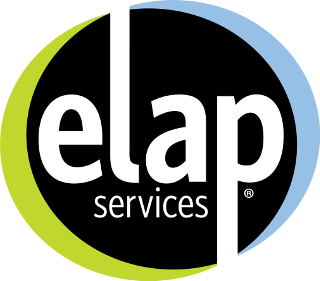A structure in which an organization funds its own employee benefits plan but hires an outside party to perform specific administrative services such as processing claims.
Resources
Glossary
We’ve developed this useful glossary to help you navigate the maze of modern healthcare and confusing terminology.
A
Administrative Services Only (ASO) Agreement
B
Balance Bill
Occurs after you’ve paid your deductible and/or copayment and your insurance company has paid what they will cover. If the provider bills for charges that exceed your out-of-pocket obligation as noted in your plans Explanation of Benefits (EOB), it is called a balance bill.
Benefit Year
The year in which a health plan operates. Some benefit year plans follow the calendar year whereas others renew in the summer or fall, depending on the organization.
C
Co-fiduciary
An advisor that acts in the best interest of a company’s health plan to ensure that the company and its health plan members pay a fair and reasonable price for healthcare.
Coinsurance
The amount an individual is required to pay for covered medical services after copays and deductibles have been taken into account.
Copayment (copay)
A specific charge a health plan may require members to pay after a medical service or supply.
COB (Coordination of Benefits)
A methodology to figure out who pays first when two or more health plans are responsible for covering the same claim.
Cost-sharing
Charges a patient is responsible for, including deductibles, coinsurance and copayments.
D
Deductible
A particular amount that the health insurance company may require plan participants to pay out-of-pocket each year before their health plan starts in order to make payments for claims.
Direct Contracting
In this model, the health plan contracts directly with a local health system, which provides cost-competitive contracted rates when members use the health system’s hospitals and providers.
E
Eligible Expenses
Expenses defined by the health insurance plan as eligible for coverage.
ERISA
This United States statute enacted in 1974 protects the retirement assets. The Employee Retirement Income Security Act (ERISA) outlines the rules that must be followed to prevent misuse of plan assets. Under ERISA, health plans must provide participants with information about plan features and funding and regularly furnish information free of charge.
Explanation of Benefits (EOB)
A statement from a health insurance company to its members that lists the charges from the healthcare provider and explains how those charges were processed and the total amount of patient responsibility for the claim.
F
Fully Insured Plan
In this traditional model for structuring an employer-sponsored health plan, the employer pays a premium to the insurance carrier. The premium rates are fixed for a year and based on the number of employees (or members) enrolled in the plan each month. The insurance carrier collects the premiums and pays the claims based on the coverage benefits outlined in the policy.
G
Group Health Insurance
A health insurance plan that provides benefits to employees of a business or members of an organization as opposed to individual and family health insurance.
Guaranteed Renewable Contract
A contract stating that the insured has the right to renew and continue his/her health insurance policy by the timely payment of premiums.
H
Health Care Financing Administration (HCFA)
Also known as the Centers for Medicare and Medicaid Services (CMS), it is a part of the federal government’s Department of Health and Human Services and is responsible for running the Medicare and Medicaid programs. CMS establishes standards for healthcare providers that must be complied with to meet requirements.
Health Service Agreement (HSA)
An agreement between an employer and health insurance company outlining benefits, enrollment procedures, eligibility standards and requirements.
High Deductible Health Plan (HDHP)
A type of health insurance plan that requires typically larger out-of-pocket costs although premiums may be lower.
M
Managed Care
A type of health insurance that has contracts with healthcare providers and medical facilities to care for members at reduced costs. The providers make up the network.
Maximum Out-of-Pocket (OOP) Costs
A predetermined amount that a person must pay before insurance will pay all of the individual’s healthcare expenses for the rest of the year.
O
Out-of-Pocket (OOP) Costs
Medical care expenses that aren’t reimbursed by insurance, including deductibles, coinsurance and copayments for covered services as well as costs that aren’t covered.
P
Plan Document
This formal, written, legal statement lists the provisions of the insurance plan. It sets forth what benefits are available, who is eligible, how benefits are funded, who is the named fiduciary, how the plan can be amended and the procedures for allocating plan responsibilities. All health plans subject to ERISA must establish and maintain a plan document.
Point of Service (POS)
A type of managed care plan where individuals have a primary care physician (PCP) who must refer them to a specialist. In a PPO, patients may go outside the network but will have to pay more of the costs unless referred by the PCP.
PPO (Preferred Provider Organization)
With a PPO, the health plan contracts with doctors and hospitals to create a network of providers for the members to use. Those going outside that network for care pay more.
R
Reference-Based Pricing (RBP)
Reference-based pricing is a method pioneered by ELAP Services that uses a reference point, such as Medicare or the cost of service to determine a base price for a service or procedure and then adds a percentage of profit above it so that patients pay a fair price for their care.
Renewal
An annual process to continue insurance coverage or to allow for the selection of new policies, plans and coverage details.
S
Self-Funded Insurance or Self-Insured Plan
A health plan in which the employers use a third-party administrator (TPA) to administer their health plan, establishing a trust for funds to pay health benefits.
Stop Loss Insurance
A type of policy that insures a company against potential losses from healthcare coverage. Stop loss insurance comes in two forms: aggregate and specific. Aggregate stop loss insurance provides a ceiling on the dollar amount of eligible expenses that an employer would pay, in total, during a contract period. The carrier reimburses the employer after the end of the contract period for aggregate claims. Specific stop loss insurance (also known as individual stop loss) provides protection for the employer against a high claim on any one individual. This is protection against abnormal severity of a single claim rather than abnormal frequency of claims in total.
Subrogation
With this legal right, insurers are allowed to sue to recover for losses they have paid out.
T
Third-Party Administrator (TPA)
An individual or organization that accepts and processes medical insurance claims from doctors, hospitals and pharmacies. The TPA also makes sure that a health plan complies with federal law.
U
Usual, Customary and Reasonable (UCR) Charge
UCR refers to the amount paid for a medical service in a geographic area based on what providers in the area usually charge for the same or similar service.
Blog
Explore the latest insights, articles and thought leadership from the health insurance experts at ELAP Services.



